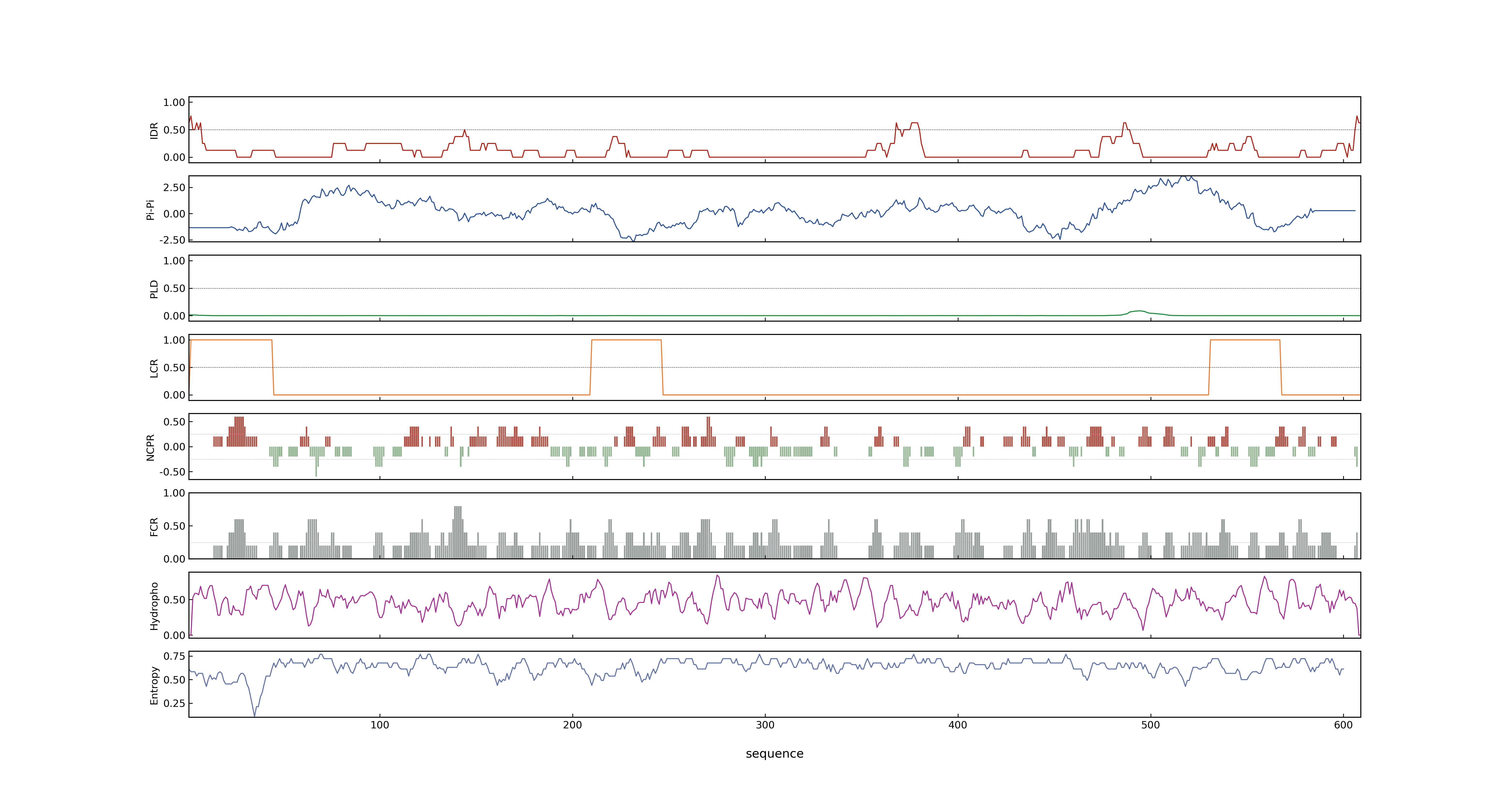- Information
- Symbol: HTD1,OsCCD7
- MSU: LOC_Os04g46470
- RAPdb: Os04g0550600
- PSP score
- LOC_Os04g46470.1: 0.0688
- PLAAC score
- LOC_Os04g46470.1: 0
- pLDDT score
- NA
- MolPhase score
- LOC_Os04g46470.1: 0.00654509
- MolPhase Result
- Publication
- Characterizations and fine mapping of a mutant gene for high tillering and dwarf in rice Oryza sativa L., 2005, Planta.
- Identification and characterization of HTD2: a novel gene negatively regulating tiller bud outgrowth in rice, 2009, Planta.
- Rice tillering dwarf mutant dwarf3 has increased leaf longevity during darkness-induced senescence or hydrogen peroxide-induced cell death, 2007, Genes Genet Syst.
- The rice HIGH-TILLERING DWARF1 encoding an ortholog of Arabidopsis MAX3 is required for negative regulation of the outgrowth of axillary buds, 2006, Plant J.
- DWARF10, an RMS1/MAX4/DAD1 ortholog, controls lateral bud outgrowth in rice, 2007, Plant J.
- Carotenoid oxygenases involved in plant branching catalyse a highly specific conserved apocarotenoid cleavage reaction, 2008, Biochem J.
- A substitution mutation in OsCCD7 cosegregates with dwarf and increased tillering phenotype in rice., 2014, J Genet.
- Knocking out of carotenoid catabolic genes in rice fails to boost carotenoid accumulation, but reveals a mutation in strigolactone biosynthesis., 2017, Plant Cell Rep.
-
Genbank accession number
- Key message
- The genetic analysis of the htd-1 mutant indicated that the phenotypes of high tillering and dwarf were controlled by a recessive gene, termed htd1
- The HTD1 gene is expressed in both shoot and root tissues
- Loss of function of HTD2 resulted in a significantly increased expression of HTD1, D10 and D3, which were involved in the strigolactone biosynthetic pathway
- By evaluating Pro(HTD1):GUS expression, we found that the HTD1 gene is mainly expressed in vascular bundle tissues throughout the plant
- The HIGH-TILLERING DWARF1 (HTD1) gene encodes an ortholog of Arabidopsis MAX3
- Complementation analyses for HTD1 confirm that the defect in HTD1 is responsible for both high-tillering and dwarf phenotypes in the htd1 mutant
- Auxin induction of HTD1 expression suggests that auxin may regulate rice tillering partly through upregulation of HTD1 gene transcription
- Restoration of dwarf phenotype after the removal of axillary buds indicates that the dwarfism of the htd1 mutant may be a consequence of excessive tiller production
- Moreover, D10 expression is upregulated in six branching mutants, d3, d10, d14, d17, d27 and high tillering dwarf (htd1)
- Moreover, the mRNA levels of D3, HTD1 and D10, which are orthologs of Arabidopsis MAX2/ORE9, MAX3 and MAX4, respectively, increased during cell death
- A substitution mutation in OsCCD7 cosegregates with dwarf and increased tillering phenotype in rice.
- Targeted mutations in five carotenoid catabolism genes failed to boost carotenoid accumulation in rice seeds, but produced dwarf and high tillering mutants when OsCCD7 gene was knocked out
- However, transgenic plants with homozygous or bi-allelic mutations to the OsCCD7 gene were extremely dwarfish with more tillers and lower seed setting than other transgenic or nontransgenic plants
- Connection
- D10~OsCCD8~OsCCD8b, HTD1~OsCCD7, Identification and characterization of HTD2: a novel gene negatively regulating tiller bud outgrowth in rice, Loss of function of HTD2 resulted in a significantly increased expression of HTD1, D10 and D3, which were involved in the strigolactone biosynthetic pathway
- D3, HTD1~OsCCD7, Identification and characterization of HTD2: a novel gene negatively regulating tiller bud outgrowth in rice, Loss of function of HTD2 resulted in a significantly increased expression of HTD1, D10 and D3, which were involved in the strigolactone biosynthetic pathway
- HTD1~OsCCD7, HTD2~D88~D14, Identification and characterization of HTD2: a novel gene negatively regulating tiller bud outgrowth in rice, Loss of function of HTD2 resulted in a significantly increased expression of HTD1, D10 and D3, which were involved in the strigolactone biosynthetic pathway
- D3, HTD1~OsCCD7, Rice tillering dwarf mutant dwarf3 has increased leaf longevity during darkness-induced senescence or hydrogen peroxide-induced cell death, Moreover, the mRNA levels of D3, HTD1 and D10, which are orthologs of Arabidopsis MAX2/ORE9, MAX3 and MAX4, respectively, increased during cell death
- D10~OsCCD8~OsCCD8b, HTD1~OsCCD7, Rice tillering dwarf mutant dwarf3 has increased leaf longevity during darkness-induced senescence or hydrogen peroxide-induced cell death, Moreover, the mRNA levels of D3, HTD1 and D10, which are orthologs of Arabidopsis MAX2/ORE9, MAX3 and MAX4, respectively, increased during cell death
- D3, HTD1~OsCCD7, The rice HIGH-TILLERING DWARF1 encoding an ortholog of Arabidopsis MAX3 is required for negative regulation of the outgrowth of axillary buds, In addition, the expression of HTD1, D3 and OsCCD8a in the htd1 and d3 mutants suggests a feedback mechanism may exist for the synthesis and perception of the carotenoid-derived signal in rice
- D27, HTD1~OsCCD7, DWARF10, an RMS1/MAX4/DAD1 ortholog, controls lateral bud outgrowth in rice, Moreover, D10 expression is upregulated in six branching mutants, d3, d10, d14, d17, d27 and high tillering dwarf (htd1)
- HTD1~OsCCD7, HTD2~D88~D14, DWARF10, an RMS1/MAX4/DAD1 ortholog, controls lateral bud outgrowth in rice, Moreover, D10 expression is upregulated in six branching mutants, d3, d10, d14, d17, d27 and high tillering dwarf (htd1)
- D3, HTD1~OsCCD7, DWARF10, an RMS1/MAX4/DAD1 ortholog, controls lateral bud outgrowth in rice, Moreover, D10 expression is upregulated in six branching mutants, d3, d10, d14, d17, d27 and high tillering dwarf (htd1)
- D3, HTD1~OsCCD7, DWARF10, an RMS1/MAX4/DAD1 ortholog, controls lateral bud outgrowth in rice, No such effects were found for D3 or HTD1, the MAX2 and MAX3 orthologs, respectively, of rice
- D10~OsCCD8~OsCCD8b, HTD1~OsCCD7, DWARF10, an RMS1/MAX4/DAD1 ortholog, controls lateral bud outgrowth in rice, Moreover, D10 expression is upregulated in six branching mutants, d3, d10, d14, d17, d27 and high tillering dwarf (htd1)
- D10~OsCCD8~OsCCD8b, HTD1~OsCCD7, Carotenoid oxygenases involved in plant branching catalyse a highly specific conserved apocarotenoid cleavage reaction, The synthesis of this inhibitor is initiated by the two CCDs [carotenoid-cleaving (di)oxygenases] OsCCD7/OsCCD8b, MAX3/MAX4 and RMS5/RMS1 in rice, Arabidopsis and pea respectively
Prev Next
